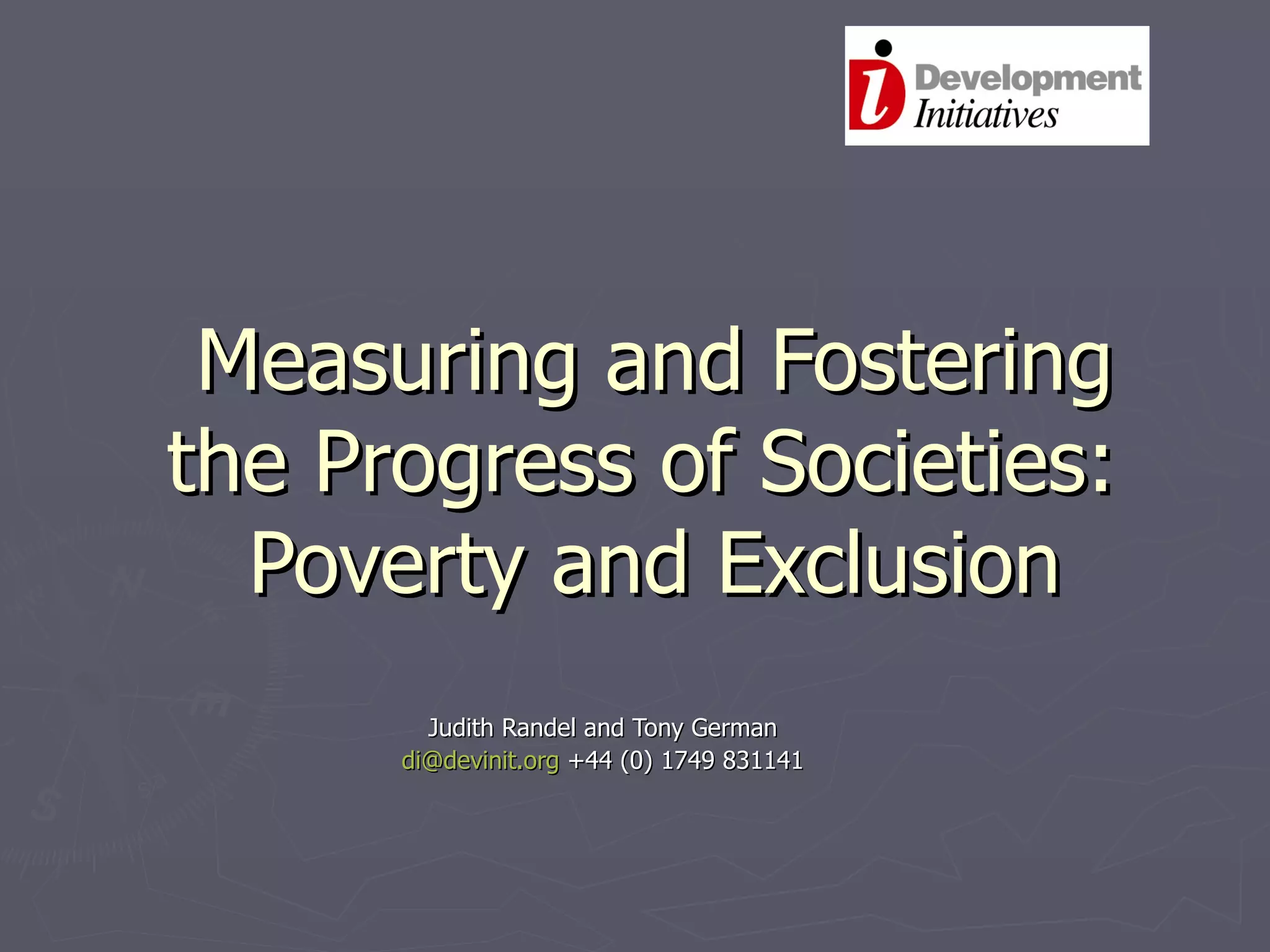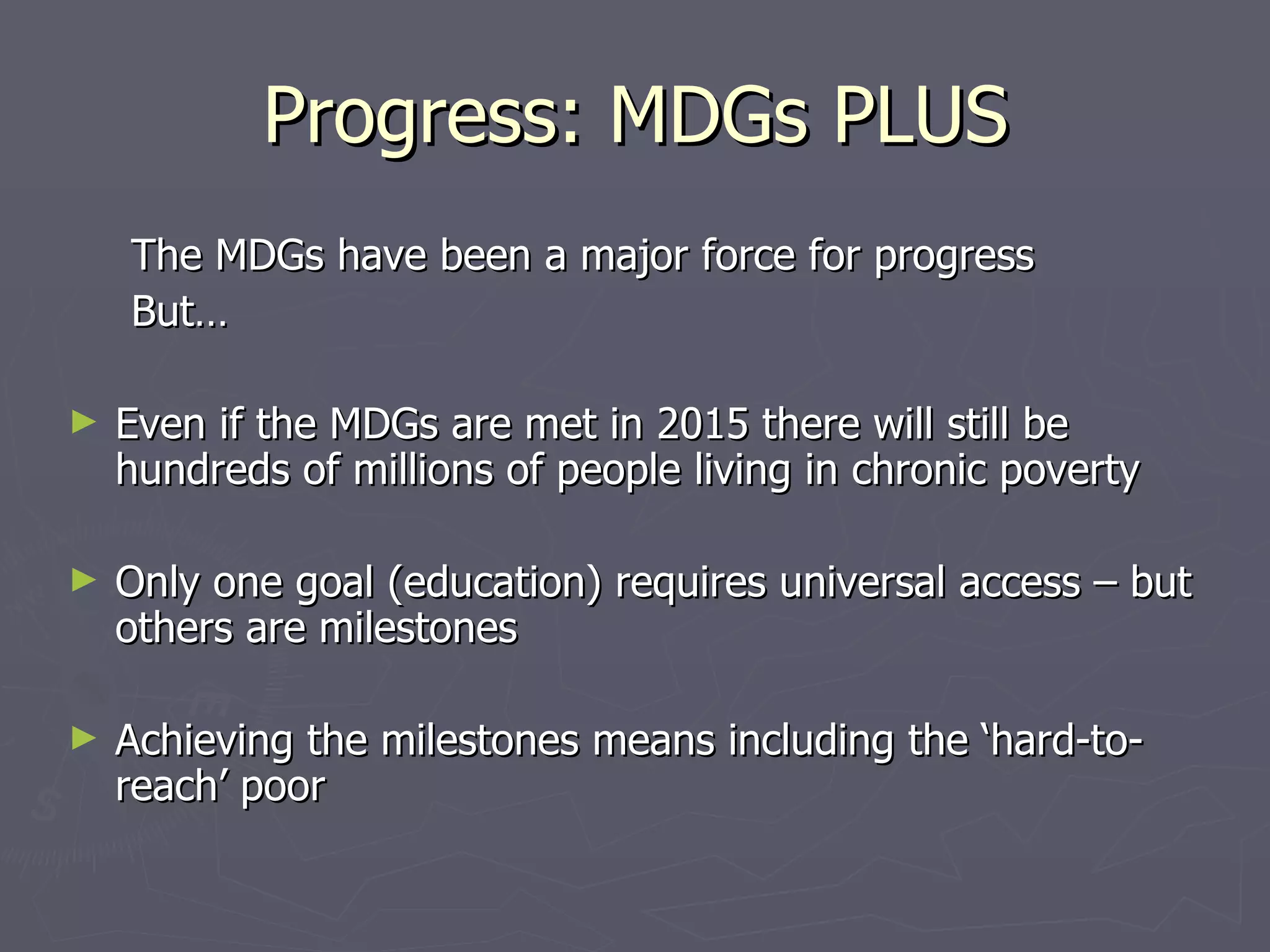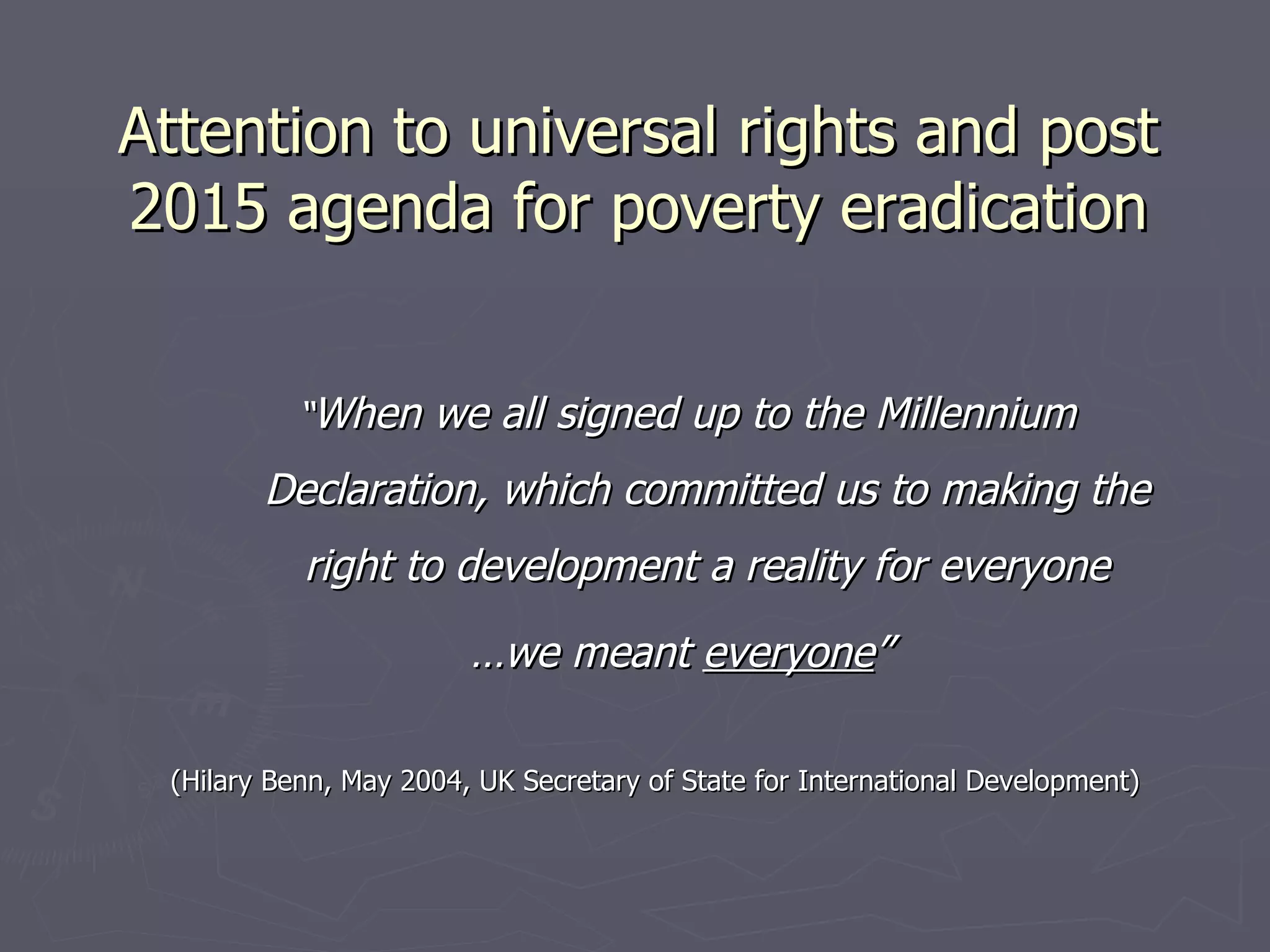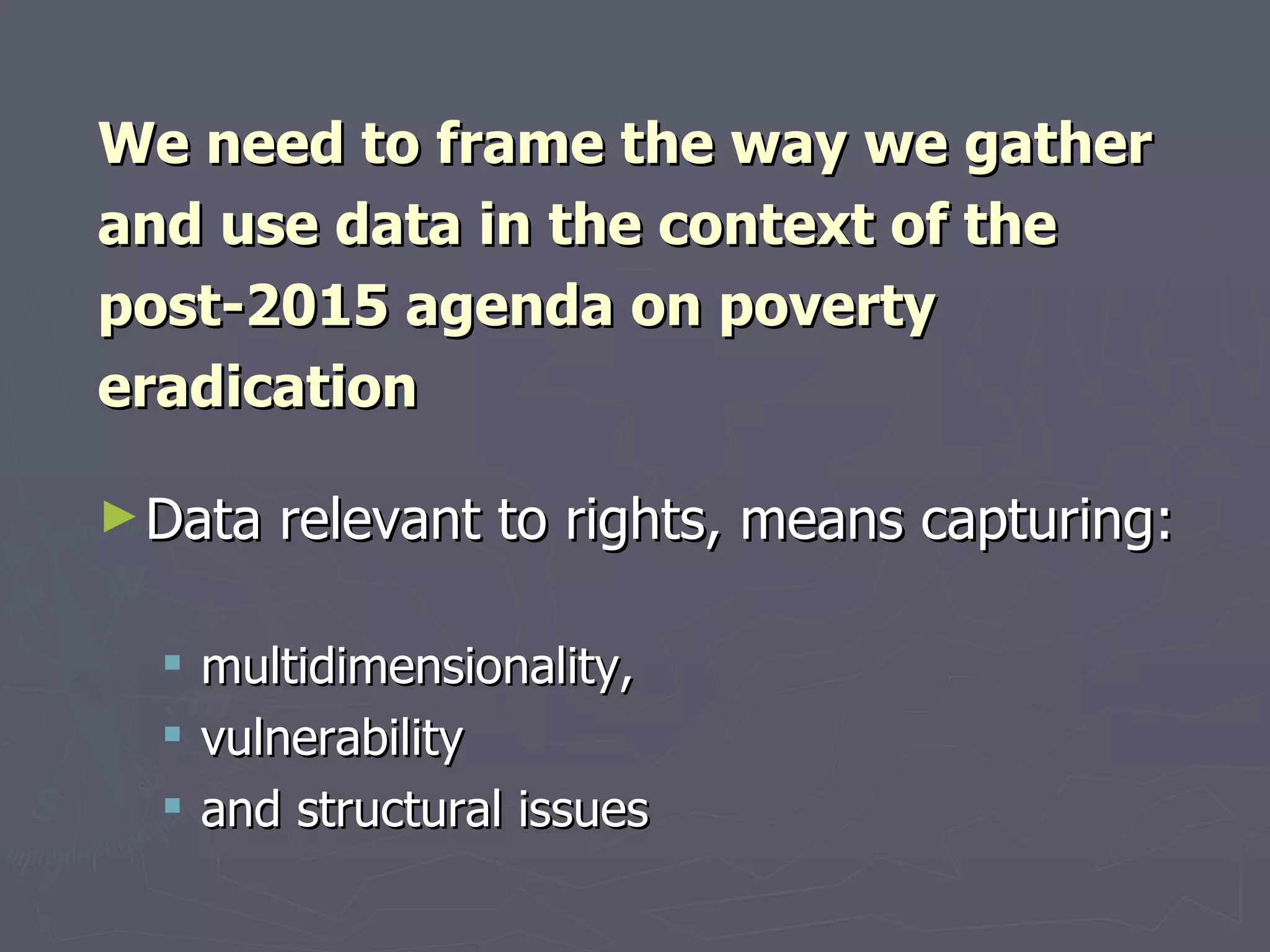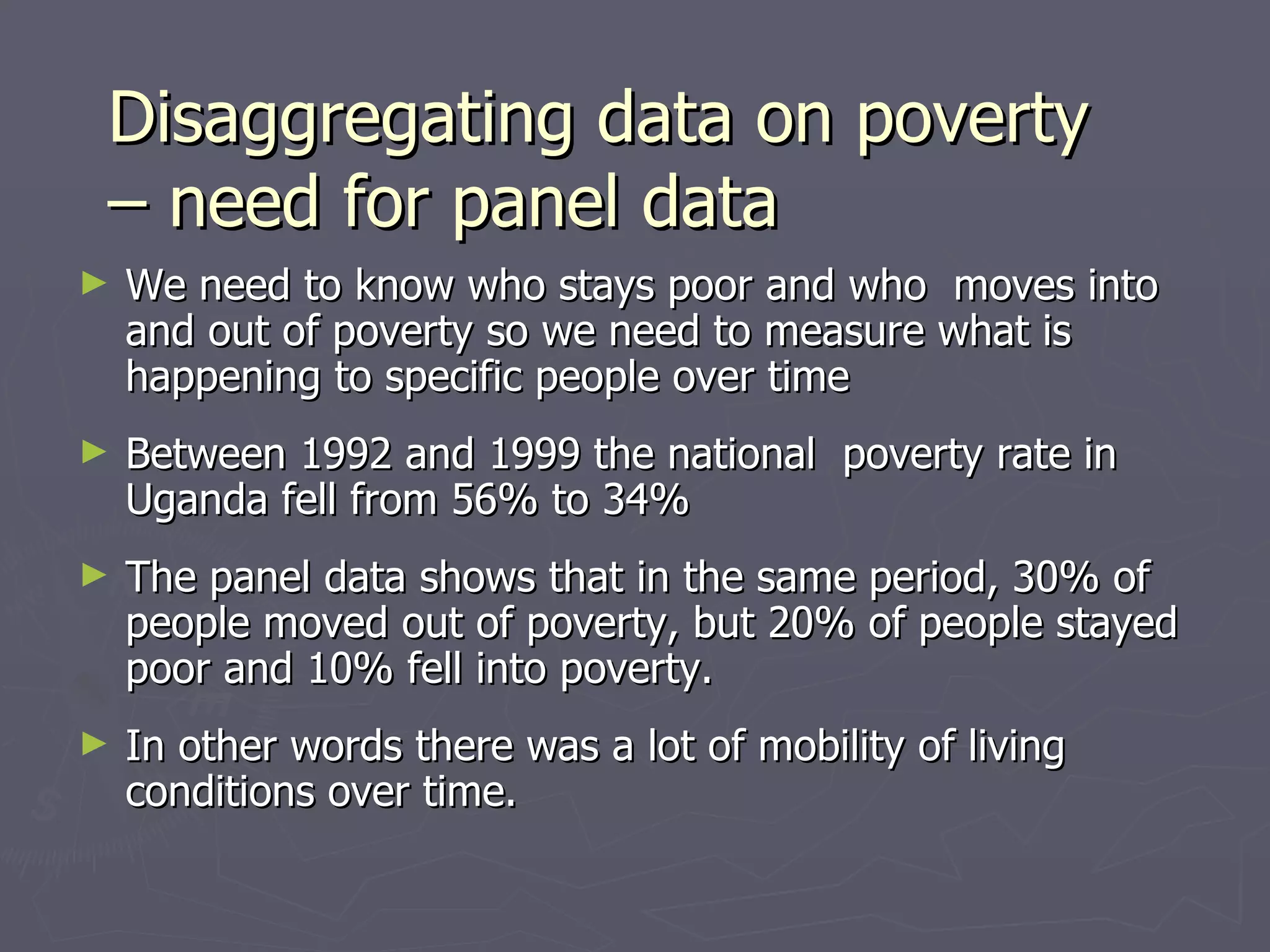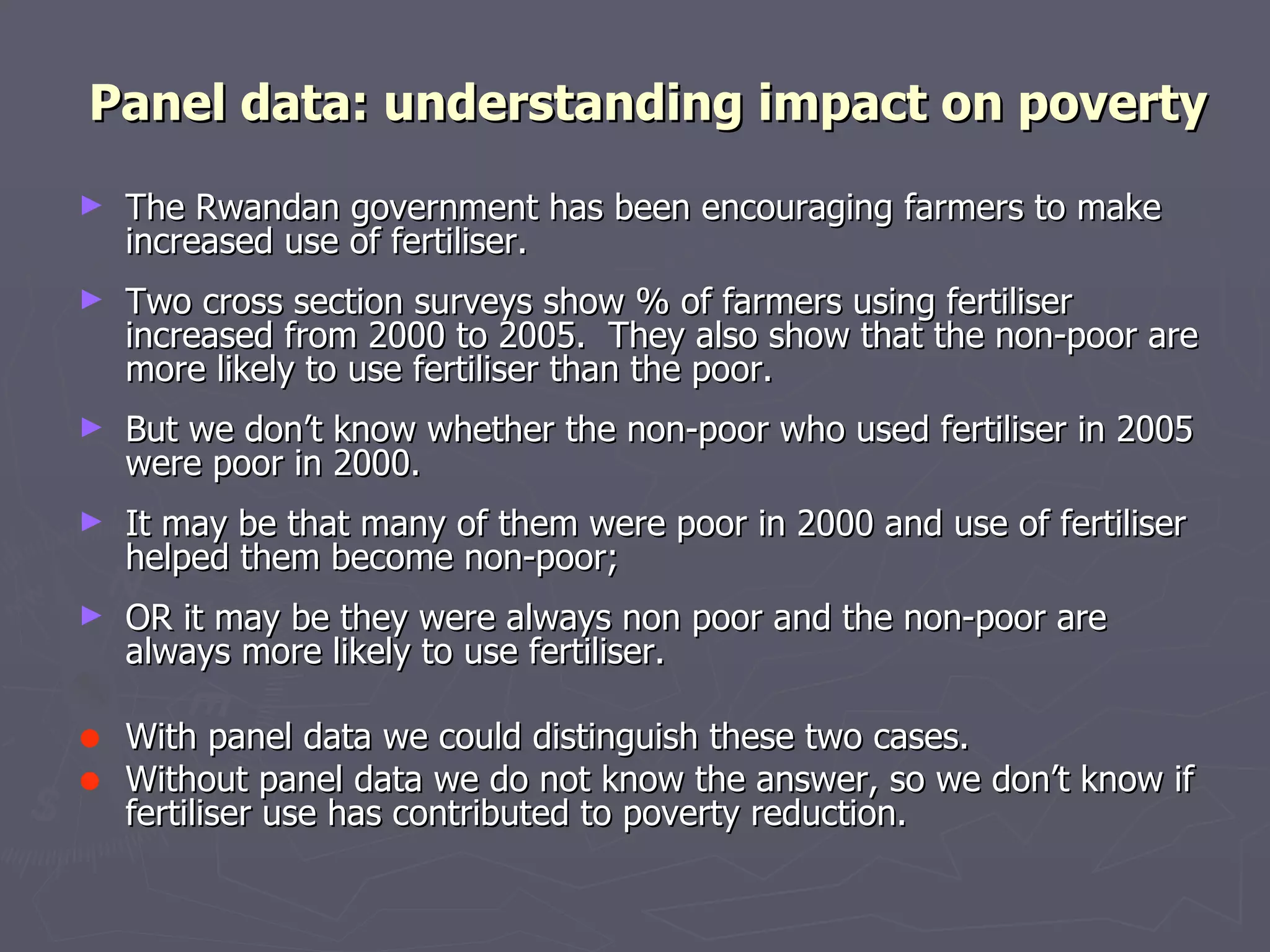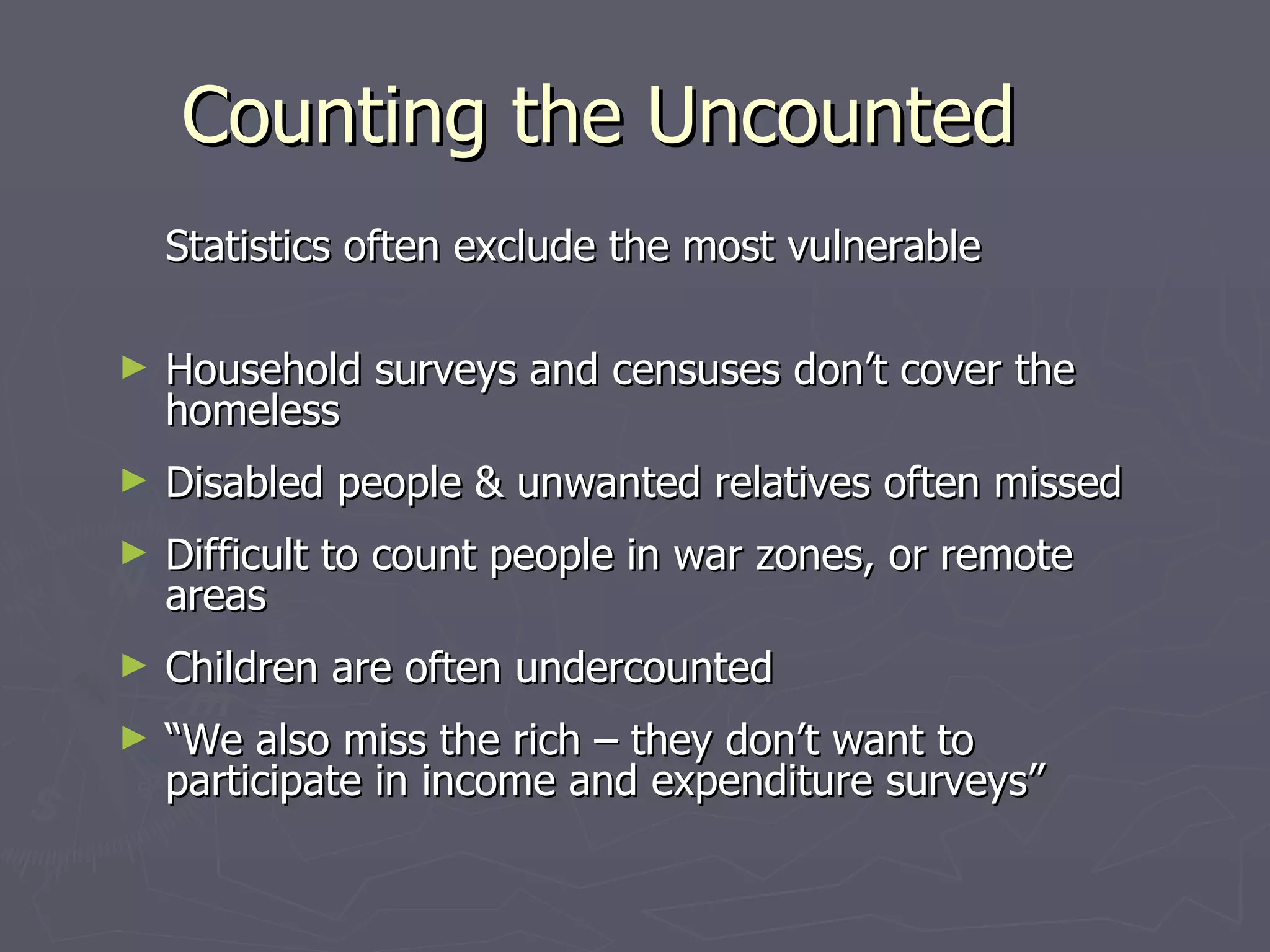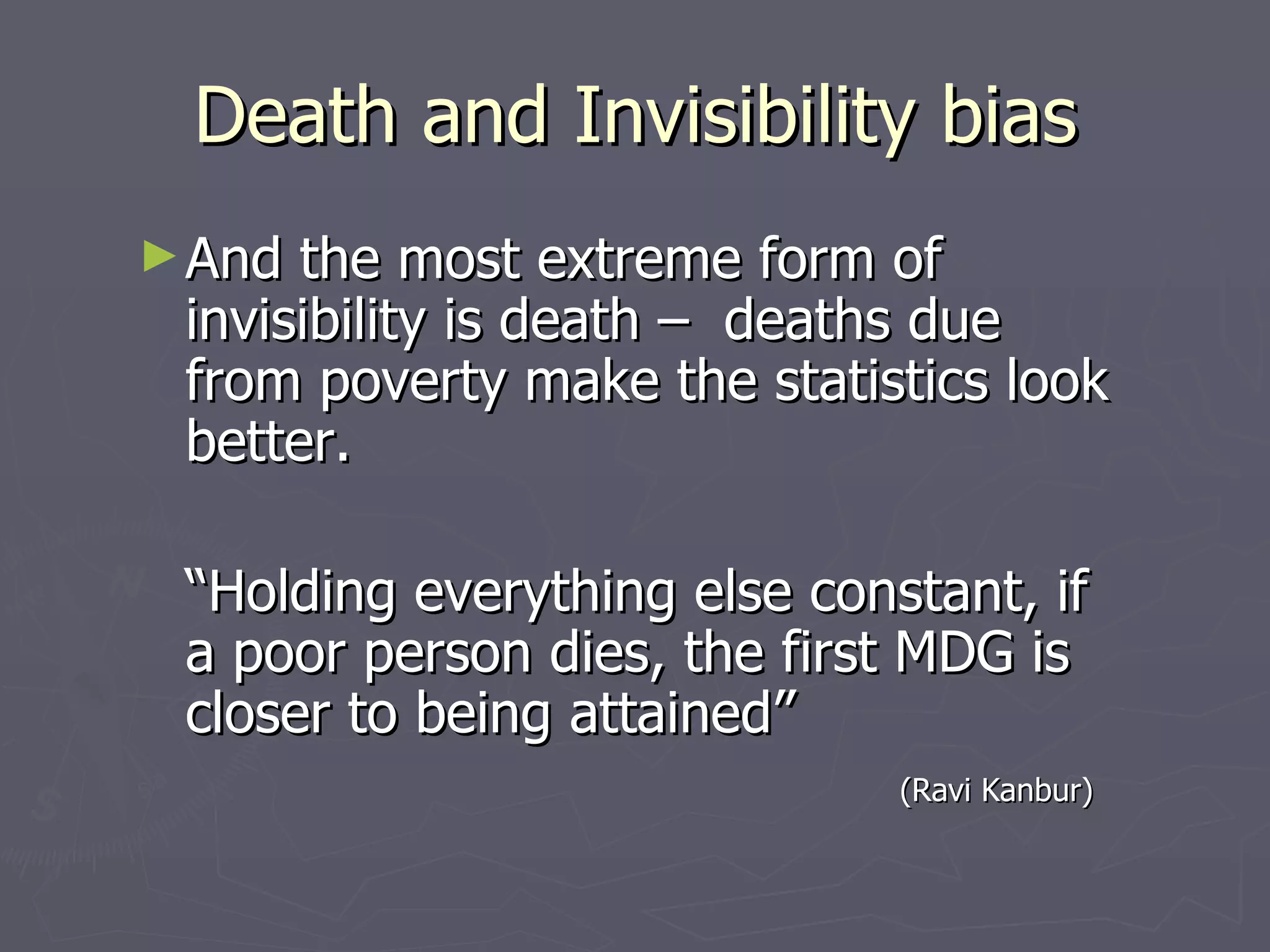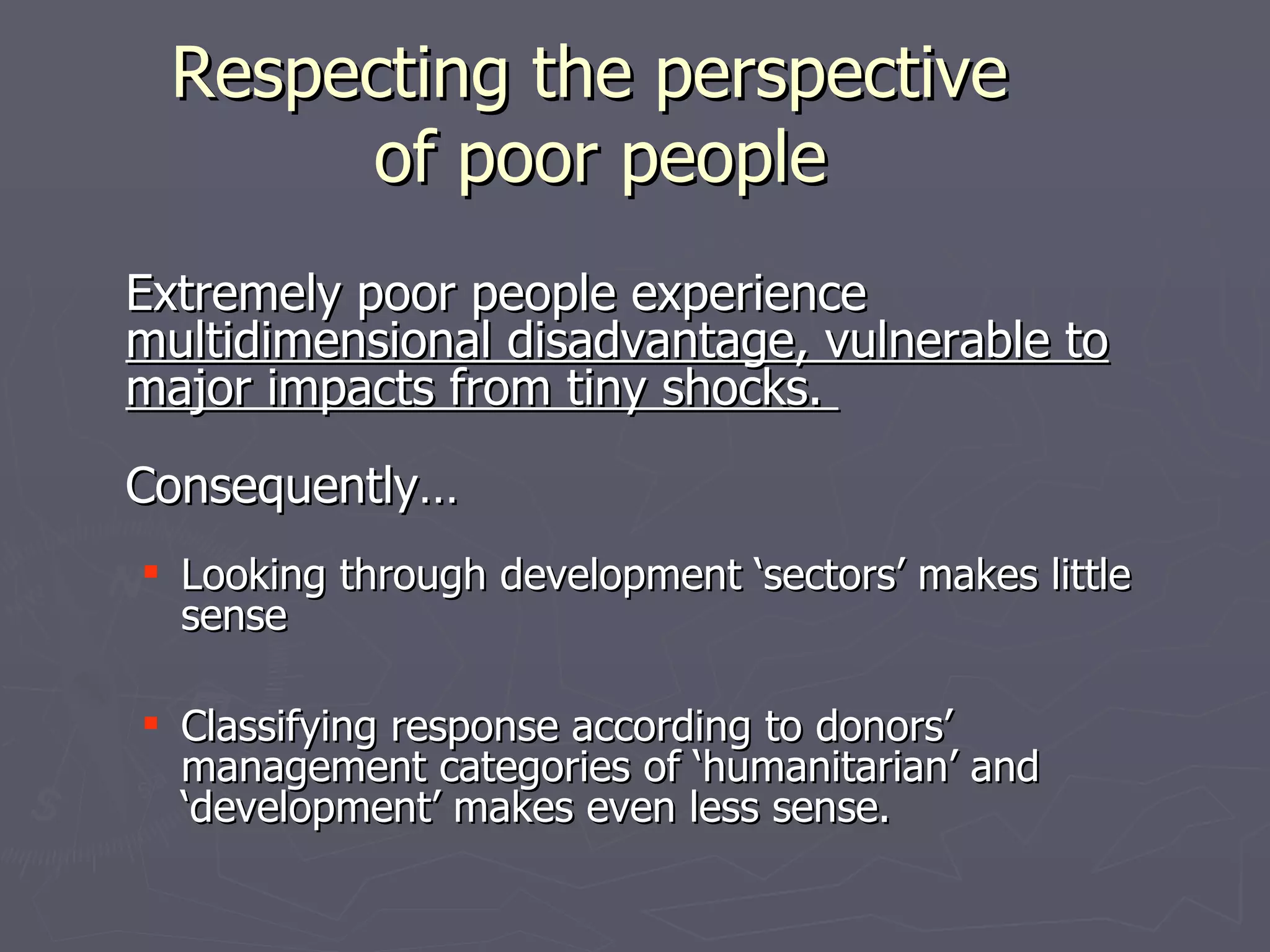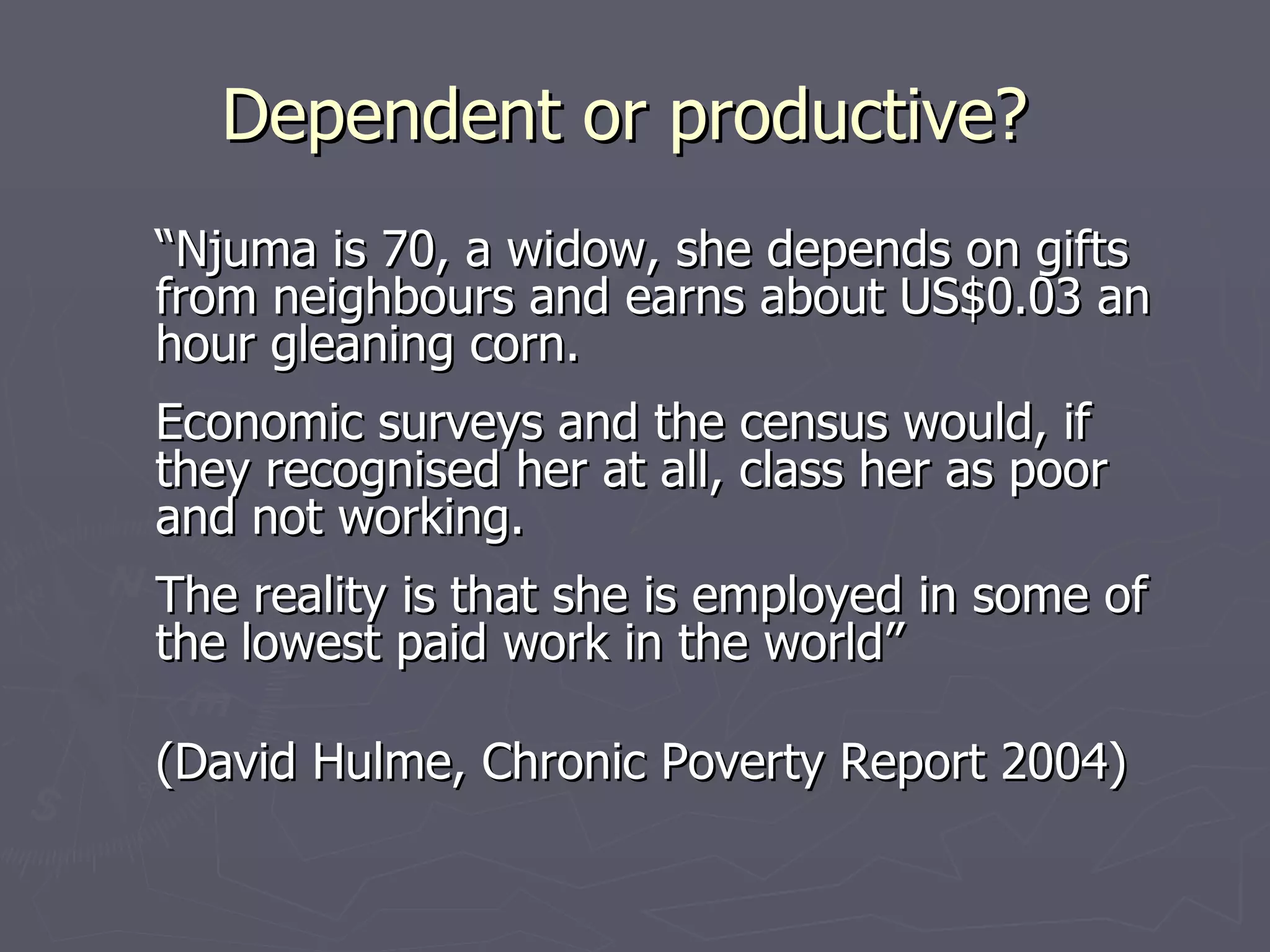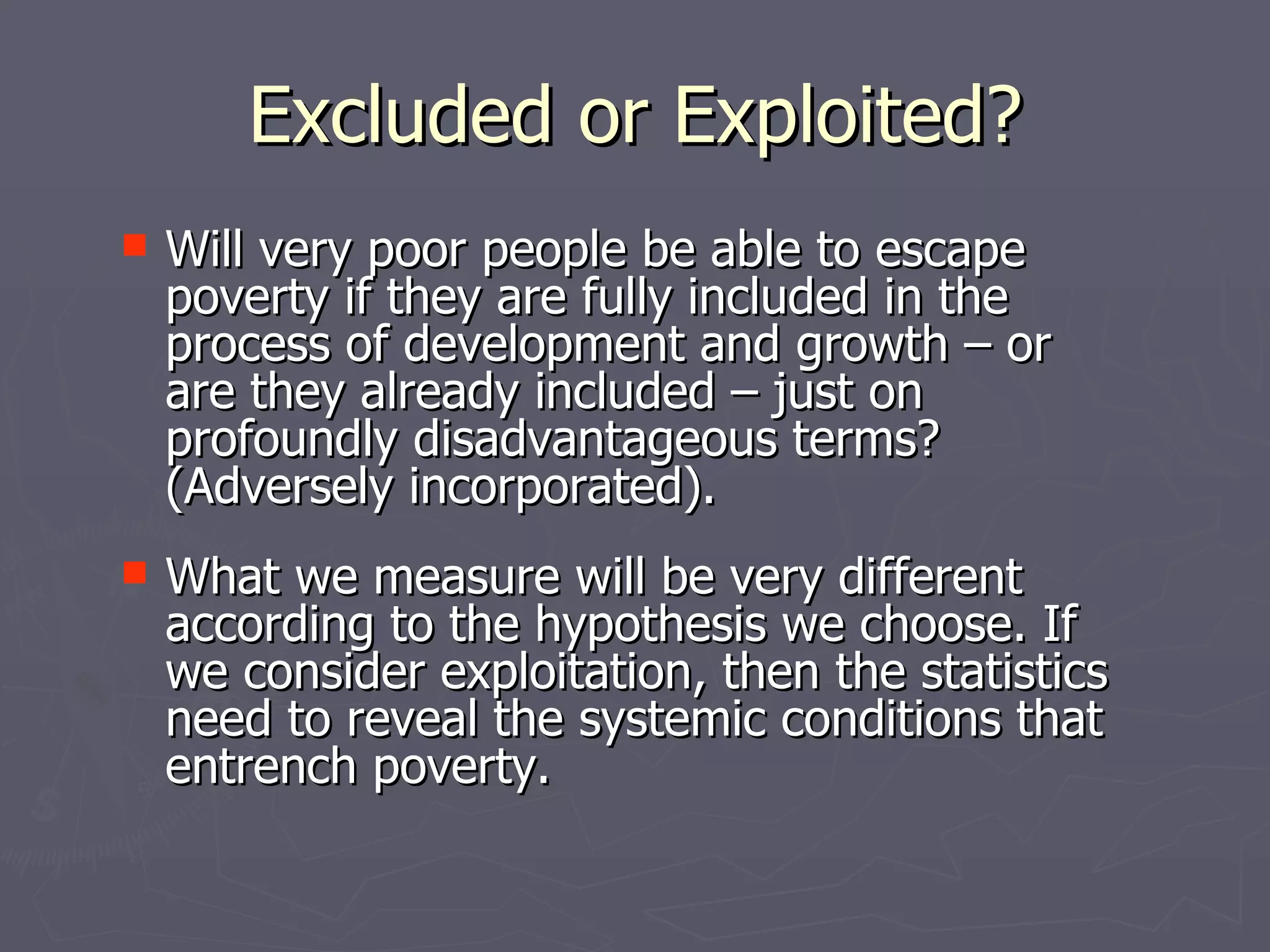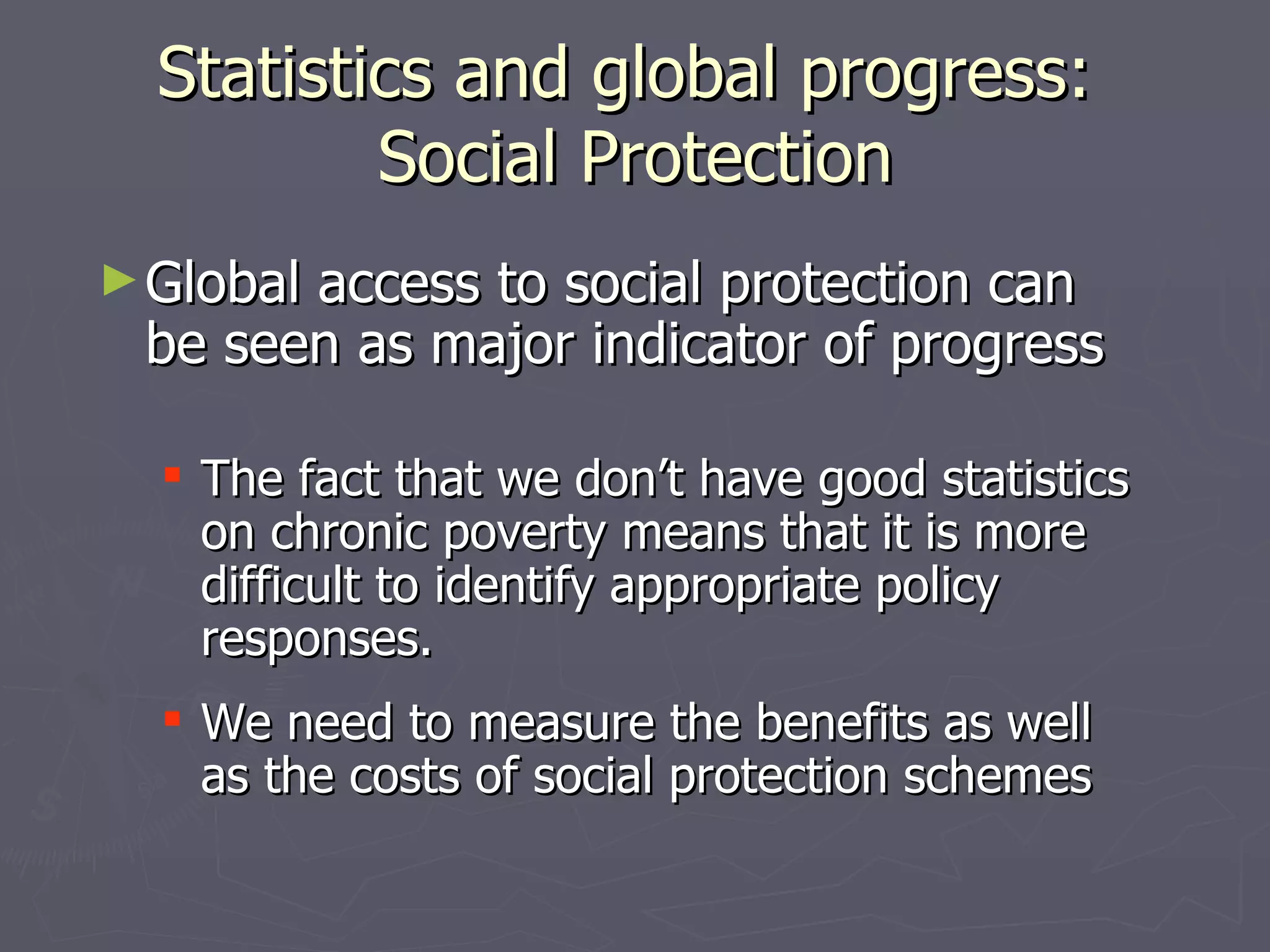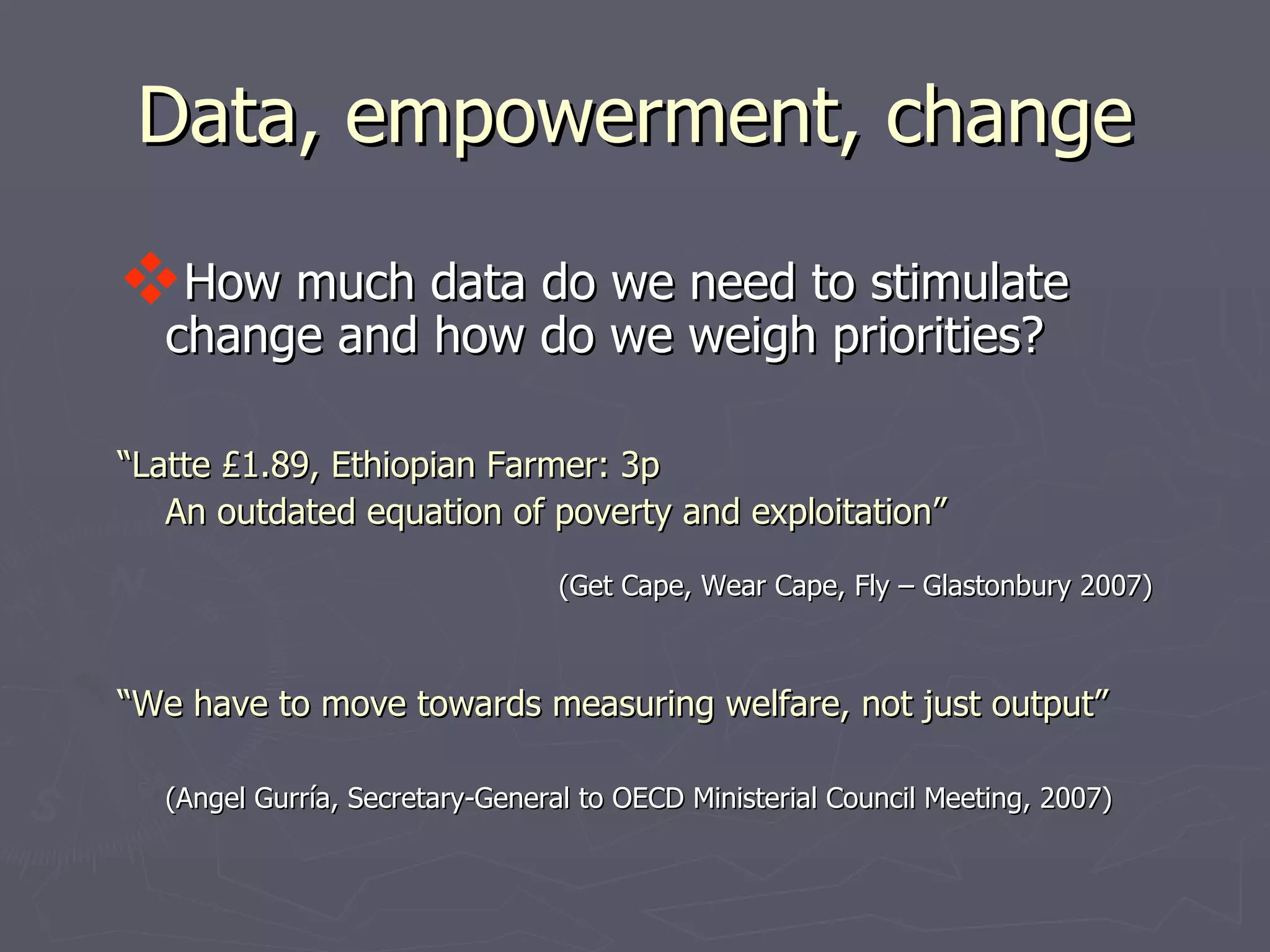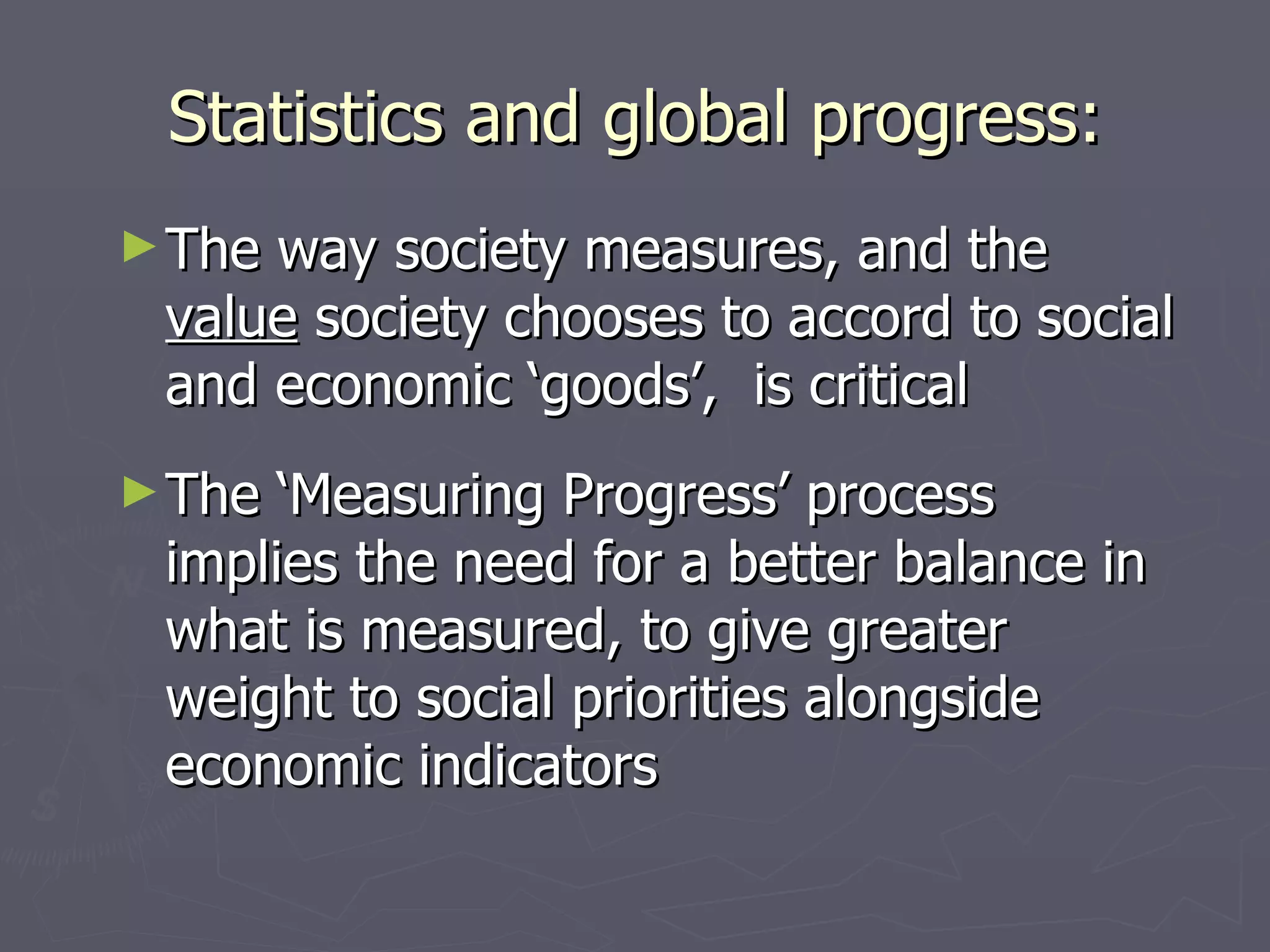The document discusses the importance of measuring and fostering progress in the fight against poverty and exclusion, emphasizing the need for improved data collection and access, especially concerning the most vulnerable populations. It highlights the limitations of current data gathering methods, such as household surveys that miss marginalized groups, and advocates for a post-2015 agenda that prioritizes human rights and addresses systemic disadvantages. A call for better data access and transparency is made to ensure effective tracking of resources for poverty alleviation and social protection.
